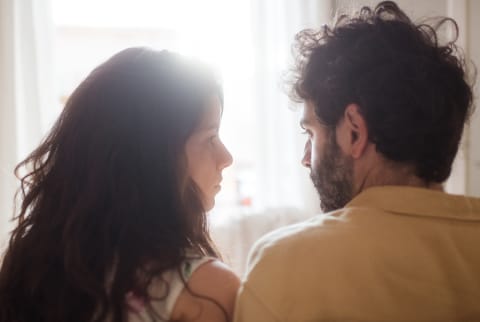Advertisement
What Are Your Invisible Investments? Understanding Your Unique Triggers In Relationships


This morning, I asked my husband if he'd listened to a podcast that I'd sent to him.
"No, I haven't," he replied.
I felt a flash of heat move through my stomach, which alerted me to my frustration. Instead of saying something critical or dismissive, I took a brief pause and invited myself to slow down a bit.
Then I said, "I feel hurt by that. You shared something important that's happening to you at work, and I spent time looking for that podcast because it relates to what you're experiencing. I took time to think of you."
He looked at me kindly and said, "I didn't know that. Thanks for telling me."
Why small things can activate us in a big way
My ability to track the sensations of heat in my stomach alerted me that I was experiencing some nervous system activation. Activation or arousal are words used to describe the physiological and psychological state of our sensory organs being stimulated by a point of perception. In a sense, it's our amygdala waking up to see if there is danger, and to prepare our system for protection against that danger.
This danger radar system is an evolutionary and biological response that is geared toward protecting us from dangerous experiences we've had in the past. In our partnerships, the "danger" that we experience in the present is often, though not always, connected to hurtful and wounding experiences from childhood or other former experiences.
This reflexive response is our nervous system playing out its adaptive reaction to our earliest childhood caregivers, namely those who were inconsistent in practicing attunement and providing co-regulated safety for our bodies. As a result, most of our intimate partnerships will trigger some kind of danger activation in us. When our system perceives a "rupture"—that is, some intrusion or abandoning movement toward or away from our somatic and relational boundary—our systems respond reflexively to alert us.
Learning to feel sensations in your body is the foundational process in many "bottom-up" forms of therapy, such as Somatic Experiencing, EMDR, Sensitometer, Hakomi, and other somatic-based modalities. The more we are able to sense into our bodies, feel, and track the patterns of our physiological reactions to different stimuli, the more insight we get into the historical programming that lives in our bodies.
Our neurophysiology is formed in our earliest environments in biological and relational coordination with our early caregivers, and all of our "states of being," both past states and current states, reside inside our bodies.
Therefore, all humans basically move between present and past states of being throughout the day. With individuals who have experienced high degrees of trauma, there is a likelihood that their physiological systems contain more past states than present awareness. However, almost all of us have experienced some degree of relational trauma in our early development, which means that the invisible roots of our physiology that were formed in the past will be triggered by the people we are in relationship with in the present.
Uncovering your invisible investments
My sensations of frustration with my husband alerted me to my "invisible investments," a phrase I coined to explain the deep roots of what might be originally thought of as a "superficial issue" in partnership. This reactive physiological response that I had with my husband alerted me to the historical pattern in my nervous system which occurs when some relational effort I've made goes unnoticed. Whenever I notice activation or arousal in the present, I always take this as an invitation to follow the roots of this response into the past.
With respect to this rupturing incident with my husband, if I go another layer into what is "invisible," I can explain to him that there were many instances throughout my childhood when I created something my parents ignored, and that I often felt like my efforts for connection were passed over. This is the invisible layer of wounding, and when I connect with my vulnerability, I have a better chance of feeling my wholeness and maturity, which allows me to connect with my partner.
I might even go on to share with him what I know about the invisible roots by saying, "When you don't acknowledge my efforts for connection, I can get pretty activated. It reminds me of my childhood and feeling like what I created wasn't important." Sharing this with my husband helps strengthen my awareness of this process, and it also gives him insight into the fact that my present reaction has a past. His awareness that my reaction is both about him and not about him can help him feel safer and less defensive, which can allow him to connect to his vulnerability and mine more deeply.
Invisible investments don't always have to have a negative reaction. We can also have a positive association that has roots in the past such as loving when our partner is playful and silly, as it reminds us of the fun, safe connection we had with a parent when we were children.
Or, feeling warm and familiar when we are in the kitchen with our partner, as it reminds us of the connection and special attention we got from our grandmother when we cooked with her as a child.
The takeaway
A long time ago someone said to me, "Don't sweat the small stuff in your marriage." I actually think this is bad advice, because when we take our emotions and our relationships seriously, then there is no "small stuff." In fact, the little things that have deep roots actually lead to deeper intimacy with ourselves, and therefore, our partner. What is most important is learning to listen to our emotional experience and to be conscious and "choiceful" about how we communicate what we are feeling.
The next time you find yourself or your partner frustrated, get curious about what invisible investments might be present.